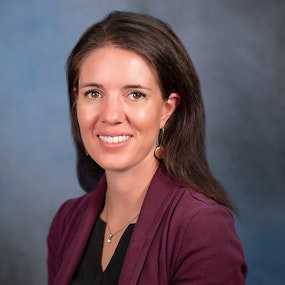ROBERT JOHNSON:
This is Public Health Review Morning Edition for Monday, March 27th, 2023. I'm Robert Johnson. Now today's news from the Association of State and Territorial Health Officials.
ANNE ZINK:
Good public health is a lot like the daily habit of diet and exercise doesn't always come easy. It's hard to prioritize with many other demands. It's often invisible in the daily news cycle, but it pays dividends in the long run.
JOHNSON:
ASTHO President and Alaska Chief Medical Officer Dr. Anne Zink on Capitol Hill Thursday, in testimony before the House Appropriations Subcommittee, urging lawmakers to support sustainable and flexible funding for public health.
ZINK:
The Association for State and Territory Health Officers represents all 50 states and the territories. We manage many of the programs that you've heard about today, and we are united in our consensus that public health funding should be flexible and sustained. Zink's testimony focused on support for three priorities in the next to CDC budget. The first is a billion dollars for the public health infrastructure and capacity, the second, $153 million for social determinants of health and a third, $340 million for data modernization.
JOHNSON:
Zink, who also works as an emergency room physician pointed out the dire need to modernize public health technology, especially when compared to the power of mobile devices that deliver instant weather information and help drivers map detours around traffic delays.
ZINK:
Yet in healthcare I look for the most recent public health alerts taped to the bathroom walls of our break room. I can't access medication list or vaccine records when I'm trying to care for a patient. And my team in Alaska had to use the National Guard to enter data into different datasets and then manually match them to understand and respond to a global pandemic.
JOHNSON:
Zink also reminded lawmakers that public health is a critical part of a vibrant nation.
ZINK:
Healthy economies are built with healthy people. And that's why the choice before you today, it's not a choice on spending, as mentioned, but a choice on investment. Investing in public health, investing the future of this great country and investing in our children.
JOHNSON:
You can read Dr. Zink's testimony using the link in the show notes.
Public health agencies are thinking of ways to use policy to build a stronger public health workforce. ASTHO's Maggie Davis says the need for action is greater than ever.
MAGGIE DAVIS:
Since before the pandemic, the public health workforce has been kind of in distress. We've had at least half of all public health department employees, between 2017 and 2021, leave their agency. With many of these employees being younger worker so employees under the age of 35, with under five years of experience with her agency.
JOHNSON:
Davis has written a new blog article with examples of workforce building initiatives.
DAVIS:
For example, the state of Oregon is currently considering a bill that would specifically help improve diversity of the public health workforce at the local level. In this bill, they'd be providing additional support to workers, such as student loan forgiveness programs or repayment programs, providing subsidized childcare for workers and making more of an intentional effort that that public health workforce is representative of the communities they're serving.
JOHNSON:
Davis says many ASTHO members have been working toward these policies for a long time.
DAVIS:
States have been trying to address health care workforce shortages, particularly in rural areas for years now. And some of these strategies they're still working towards, for example, having interstate licensure compacts to improve access of health care providers across state lines. There's also been more incentive programs for professionals to have loan forgiveness or other financial supports or incentives to serve underserved areas. But they're also starting to look at ways to increase the supply of professionals by enabling like more seats for residents from medical school to increase the total number of professionals in training.
JOHNSON:
You can read the blog article about public health workforce policy using the link in the show notes.
Also today, ASTHO has a webpage dedicated to workforce information. The PH-HERO Workforce Resource Center contains articles, links and other materials curated to help agencies build stronger teams. You can visit the page using the link in the show notes.
Finally, this morning, ASTHO celebrates women who've made public health history in a new blog article written by Dr. Kimberlee Wyche-Etheridge. The article highlights the accomplishments of former state health officials, like ASTHO's first woman president Dr. Kristine Moore Gebbie and Dr. Joycelyn Elders, ASTHO's first African American woman president. You can read more using the link in the show notes.
That'll do it for today's newscast. We're back tomorrow morning with more ASTHO news and information. I'm Robert Johnson. You're listening to Public Health Review Morning Edition. Have a great day.






